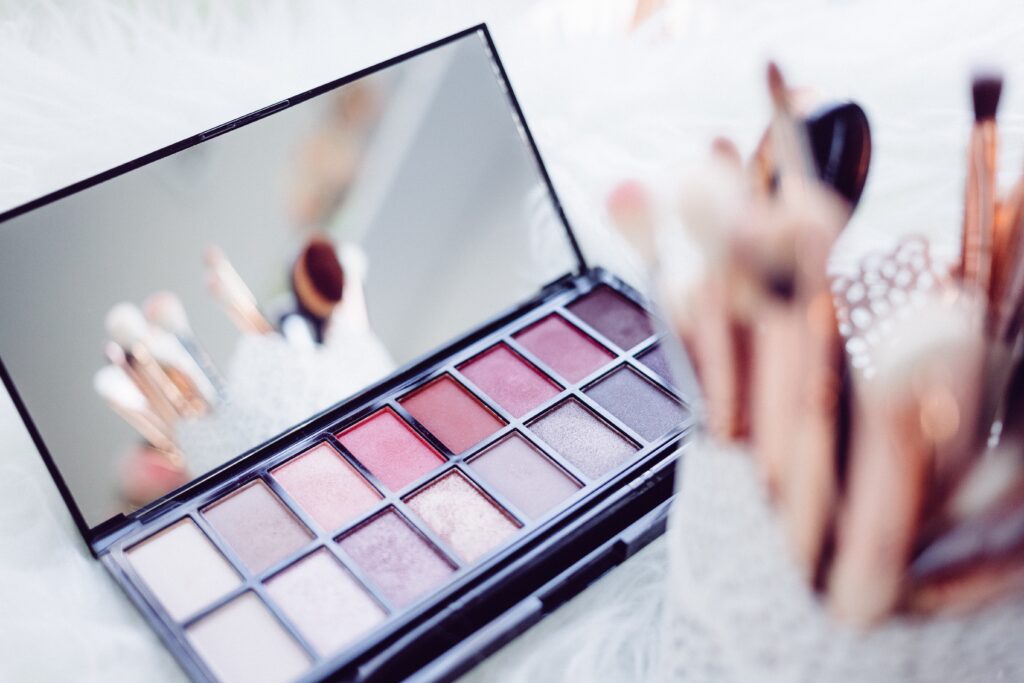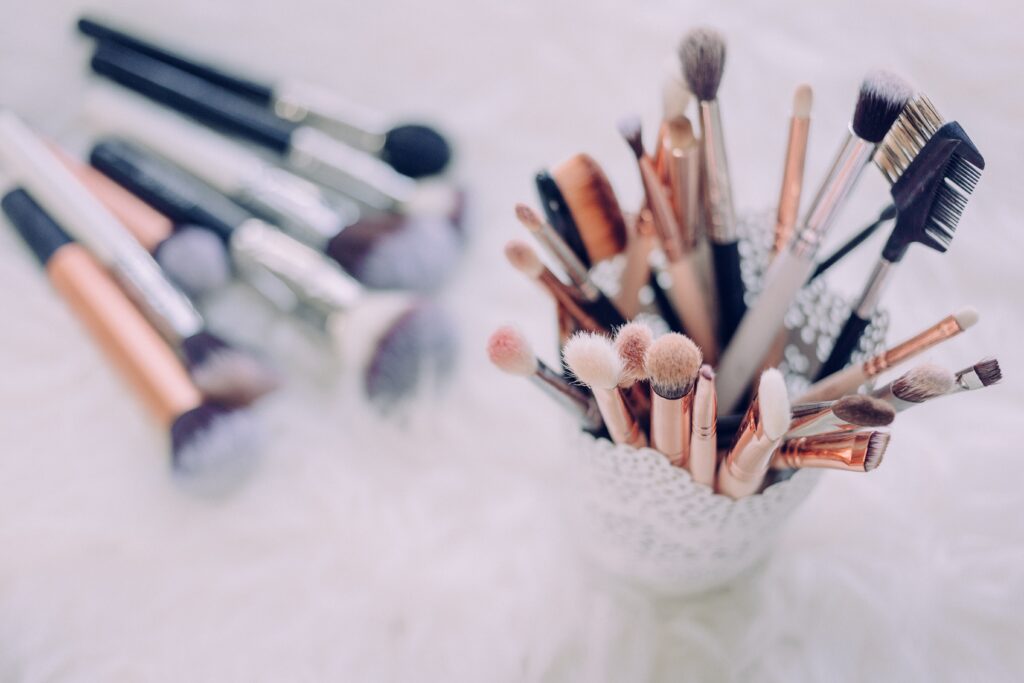When it comes to achieving flawless-looking skin, we all want a little extra help to hide those pesky blemishes and dark circles. But with so many different methods and techniques out there, it can be overwhelming to know which one is the best. Fear not, because we’re here to guide you through the world of concealer application. Whether you’re a makeup novice or a beauty expert, we’ve got the tips and tricks you need to know to ensure your concealer works its magic and leaves you looking fresh-faced and radiant. Say goodbye to imperfections and hello to a flawless complexion!

This image is property of images.unsplash.com.
Choosing the Right Concealer Shade
Choosing the right concealer shade is crucial to achieving a flawless makeup look. Understanding your skin undertone is the first step in finding the perfect shade for you.
Understanding Your Skin Undertone
Before diving into the world of concealer shades, it’s essential to determine your skin undertone. Your undertone can be warm, cool, or neutral. Warm undertones have hints of yellow or golden, cool undertones have hints of pink or blue, while neutral undertones have a balance of both.
To determine your undertone, examine the veins on the inside of your wrist. If your veins appear more blue or purple, you likely have cool undertones. If your veins look greenish, you have warm undertones. If you can’t clearly distinguish either, you likely have a neutral undertone.
Matching the Concealer Shade to Your Skin Undertone
Once you know your skin undertone, it’s time to select the ideal concealer shade. For warm undertones, opt for a concealer with yellow or golden undertones. These shades will effectively neutralize any discoloration on your skin. If you have cool undertones, go for a concealer with pink or peach undertones. These shades will counteract any darkness or grayness. Neutral undertones have more flexibility and can play around with a variety of shade options.
Always test the concealer shade on your jawline or inner wrist to ensure it matches your skin tone seamlessly. Remember that concealers that are too light will make blemishes or dark circles stand out, while those that are too dark will accentuate imperfections.
Testing the Concealer Shade
When testing a concealer shade, it’s crucial to assess it in natural light. Artificial lighting can distort colors and affect your judgment. Apply a small amount of concealer to your jawline or inner wrist and blend it in gently. Take a step back and see how well it blends with your skin tone. If the shade seems to disappear, it’s a good match.
Preparing Your Skin
Before applying concealer, it’s important to properly prepare your skin to achieve the best results. This involves cleansing your face, moisturizing, and using a primer.
Cleansing Your Face
Start by thoroughly cleansing your face to remove any dirt, oil, or makeup residue. Use a gentle cleanser suitable for your skin type and rinse it off with lukewarm water. Pat your face dry with a clean towel, ensuring not to rub or pull at your skin.
Applying Moisturizer
Once your skin is cleansed, apply a moisturizer to hydrate and nourish your skin. Choose a moisturizer that suits your skin type, whether it’s oily, dry, or combination. Gently massage the moisturizer into your skin, paying extra attention to any dry or flaky areas.
Using a Primer
To create a smooth canvas for your concealer, apply a primer after moisturizing. Primers help to fill in fine lines and pores, ensuring that your makeup applies evenly and lasts longer. Choose a primer that caters to your specific needs, such as one that blurs imperfections or controls oil. Apply a small amount of primer to your face, focusing on areas where your concealer will be applied.

This image is property of images.unsplash.com.
Applying Concealer to Blemishes
When it comes to concealing blemishes, it’s important to consider the texture of your concealer, the application techniques, and color-correction.
Concealer Texture
The texture of your concealer plays a significant role in effectively covering blemishes. For raised blemishes, opt for a thicker, more opaque concealer that will provide better coverage. If your blemishes are flaky or dry, a liquid or cream concealer will work best.
Concealer Application Techniques
To conceal blemishes, use a small brush or clean fingertip to apply the concealer directly to the affected area. Gently pat or dab the concealer onto the blemish, building up coverage if needed. Avoid rubbing the concealer, as this can lead to further irritation or redness.
Color-Correcting Blemishes
Color-correcting can also be an effective technique for concealing blemishes. For example, if you have redness or inflammation, you can use a green color corrector to neutralize the red tones before applying your concealer. Use a small brush or clean fingertip to apply a small amount of color corrector directly to the blemish. Blend it out gently and then apply your concealer over the corrected area.
Covering Dark Circles
Dark circles under the eyes can make you appear tired or even older than you are. However, with the right concealer and application techniques, you can brighten up your under-eye area and achieve a more revitalized look.
Concealer for Under-eye Circles
When choosing a concealer for under-eye circles, opt for one that is one to two shades lighter than your natural skin tone. The lighter shade will help to counteract the darkness and brighten the area.
Color-Correcting Under-eye Circles
Color-correcting can also be beneficial for combating dark under-eye circles. If you have purple or bluish tones, use a peach or salmon color corrector to neutralize the darkness. Apply a small amount of color corrector to the under-eye area and gently blend it out. Then, follow up with your concealer in a shade that matches your skin tone.
Concealer Application Techniques for Dark Circles
To apply concealer to your dark circles, use a small brush or your fingertip. Start by applying small dots of concealer along the under-eye area, forming an upside-down triangle shape. Gently blend in the concealer using a patting or dabbing motion. Be sure to blend the concealer outwards, past the under-eye area, to create a seamless transition with the rest of your complexion.

This image is property of images.unsplash.com.
Blending Techniques
Properly blending your concealer is crucial for achieving a natural, seamless finish. There are several techniques you can use to blend your concealer effectively.
Using a Brush
Using a brush is a common method for blending concealer. Choose a small, dense brush with synthetic bristles for precise and controlled application. Use gentle patting or stippling motions to blend the concealer into your skin. Work in small areas and gradually build up coverage if needed.
Using a Beauty Blender
A Beauty Blender is a versatile tool that can be used to blend concealer seamlessly. Dampen the sponge before use and squeeze out any excess water. Gently bounce the Beauty Blender over the concealed areas, using a dabbing or rolling motion. The sponge will help to blend the concealer evenly without leaving any streaks or harsh lines.
Finger Blending
Using your fingertips can also be an effective way to blend concealer, especially in a pinch. The heat from your fingers helps to melt the concealer into your skin, creating a natural finish. Gently pat and blend the concealer into your skin using your ring finger or middle finger. Be cautious not to tug or drag at your skin, as this can cause irritation.
Setting the Concealer
Setting your concealer is essential for making it last longer and preventing creasing or smudging throughout the day. This step involves choosing the right setting powder and applying it correctly.
Choosing the Right Setting Powder
When selecting a setting powder, opt for a finely milled and translucent powder. Translucent powders work well for most skin tones, as they don’t alter the color of your concealer or foundation. Consider your skin type when choosing a powder – if you have oily skin, a mattifying powder may be more suitable, while those with dry skin may prefer a powder with a slight luminosity.
Applying Setting Powder
After applying your concealer, lightly dip a fluffy brush into the setting powder and tap off any excess. Gently press the brush onto the concealed areas, focusing on the under-eye area or blemishes. Allow the powder to sit for a few minutes to absorb excess oil or moisture, and then lightly dust away any excess powder using the same brush or a clean fluffier brush.
Long-lasting Concealer
To ensure your concealer lasts all day, there are additional steps you can take, such as using a setting spray and avoiding touching or rubbing the concealed areas.
Using a Setting Spray
After completing your makeup, use a setting spray to lock everything in place, including your concealer. Hold the setting spray a few inches away from your face and mist it over your entire complexion, ensuring you cover the concealed areas. The setting spray will help to extend the longevity of your concealer and keep everything in place throughout the day.
Avoiding Touching or Rubbing the Concealed Areas
While it may be tempting to touch or rub your face, especially if you have an itch or are prone to fidgeting, try to avoid doing so. Rubbing or touching the concealed areas can cause the product to rub off or smudge, compromising the coverage and overall appearance. Instead, gently pat or dab any areas that need attention, without touching the concealed areas directly.
Additional Tips and Tricks
Here are some additional tips and tricks to enhance your concealer application and achieve optimal results.
Using Color-Correcting Primers
If you have specific concerns like redness or discoloration, consider using a color-correcting primer before applying your concealer. These primers help to neutralize any targeted concerns, allowing your concealer to glide on smoothly and provide better coverage.
Layering Thin Coats of Concealer
Instead of applying a thick layer of concealer all at once, try layering thin coats. This technique allows for more control and buildable coverage. Start with a small amount of concealer and blend it in. If more coverage is needed, apply another thin layer and blend again. Repeat this process until you achieve the desired coverage.
Using a Colorless Powder for Touch-ups
Throughout the day, your concealer may start to fade or wear off. To refresh your coverage, carry a compact with a colorless or translucent powder. Simply pat the powder over the concealed areas with a small brush or sponge to revive the coverage and mattify any excess shine.
Common Mistakes to Avoid
To ensure a flawless concealer application, it’s essential to steer clear of these common mistakes.
Applying too much concealer
Using too much concealer can result in a cakey or heavy appearance. Start with a small amount and gradually build up the coverage if needed. Remember, less is often more when it comes to achieving a natural look.
Using the wrong shade
Choosing the incorrect shade of concealer can be detrimental to your overall makeup look. Make sure to test the concealer on your skin before purchasing and check how it looks in natural lighting to ensure it matches seamlessly.
Not blending properly
Proper blending is key to achieving a seamless finish. Take the time to blend your concealer thoroughly, using the appropriate tools and techniques. Harsh lines or streaks can make your makeup appear amateurish.
Conclusion
Finding your perfect concealer routine takes time and experimentation, but with the right techniques and tools, you can achieve flawless coverage for blemishes and dark circles. Remember to choose a concealer shade that matches your undertone, prepare your skin properly, and use effective application and blending techniques. With practice and patience, you’ll soon discover the best way to apply concealer that suits your unique needs and enhances your natural beauty.
